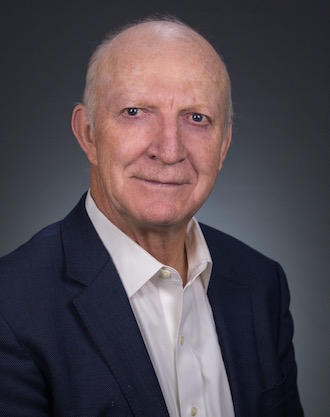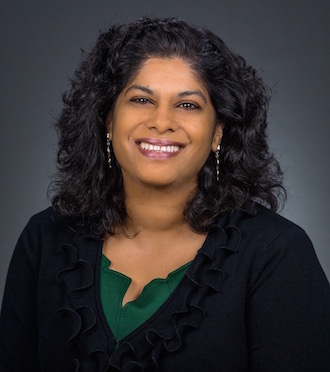
Did you know Bob Marley died of melanoma? Or, that Jimmy Carter was recently ‘cured’ of metastatic melanoma? Many misperceptions abound with respect to skin cancer —specifically melanoma, so we will address them here in this two part series.
To debunk myths about who is at risk, discuss hot topics in the field and learn what treatments loom on the horizon, I enlisted the help of three leading melanoma researchers from The Wistar Institute —our nation’s first independent biomedical research facility where I am a member of the leadership council.
Skin cancer is the most common cancer in the United States with melanoma being the most lethal form. The Centers for Disease Control and Prevention (CDC) affirms greater than 90% of melanomas are secondary to the cellular damage caused by exposure to ultraviolet radiation (UV)— albeit from sunlight or use of indoor tanning beds for all skin cancer types. They estimate without comprehensive prevention programs, by 2030, these numbers could balloon with respect to new diagnoses translating into billions of dollars in healthcare costs.
In 2016, the American Cancer Society predicts about 76,380 new melanoma cases will be diagnosed while 10,130 will die from the disease.
It is of critical import to recognize that this issue of sun protection and skin cancer avoidance is a year-round one. Hence, why I wanted to raise awareness now. Using effective broad-spectrum sunscreen, protective clothing that covers the skin (e.g. sunglasses, hat) and limiting outdoor time in the middle of the day when the sun is most intense are all necessary preventive measures.
Let’s dive in for a deeper understanding with Meenhard Herlyn, D.V.M., D.Sc., Jessie Villanueva, Ph.D., and Ashi Weeraratna, Ph.D. from the Wistar Institute Melanoma Research Center (responses are listed using their initials):
Why is melanoma the most worrisome of skin cancers?
MH: Melanoma represents only a small percentage of all skin cancers. However, over 70% of death from cancers of the skin are due to melanoma. So, melanoma continues to be the deadliest cancer and it continues to increase every year— anywhere between 2.5 - 4.5%. And, as I saw yesterday in predictive statistics it’s predicted that by 2030, only 12-14 years, we will have double the number of cases as we have today. So, there is continuing threat of an ever increasing number of new melanoma cases.
Why are the number of cases escalating?
MH: The greatest reason is most likely that people go out in the sun and get a good burn and don’t take care of it. Meaning —what we call scientifically— is the intermittent sun exposure. We sit in our offices all day and don’t have a gentle tan. Then, suddenly on the weekend, we get a good hefty sunburn particularly when we are kids or if we have a genetic susceptibility that we easily burn, have freckles, blue eyes and all those things. I used to have red hair, so those are all risk factors for melanoma and there is a generation—particularly my generation even 10-20 years younger— who have not had a real rigorous training in prevention of getting the sun, so the skin is heavily exposed and damaged.
One of the reasons I wanted to delve into this topic in the Fall is to clarify the importance of year-round sun safety. Is the summer more hazardous than winter in terms of exposure?
AW: You are always at risk if you have sun exposure. What’s interesting about winter is that if you go skiing, the snow on the slopes actually reflects a huge amount of the UV (aka ultraviolet) back so you get a double dose of UV radiation. So skiing is harmful. People are usually covered from head to toe, but don’t typically think of putting sunblock on their face. They should sunblock their face.
The use of indoor tanning beds or tanning, in general, is such a hot topic in skin cancer. Is addiction a component?
MH: The interesting thing with tanning is it is addictive. There now is very good data from experimental animals, but also more from larger populations of who really wants to get tan. Those young people are at most risk because they cannot control that they really want to get a sun tan. There is increasing legislative actions that young people (less than 16 years) need the consent of their parents because it is critical since this age group is most at risk.
AW: Let’s not forget that the use of tanning beds has really increased among young women ages 15-30. The rates of melanoma in those young women are rising very, very rapidly. They get a rush of endorphins that’s very similar to the same types of endorphins you get from healthier activities such as a runner’s high—or, from smoking which of course is not a healthy activity. We refer to this as tanorexia because you really become addicted to tanning. At present, there is no data addressing the familial influence of tanning bed use.
About 80% of our lifetime sun exposure happens in the first 20 years, explain the impact of that in the development of melanoma and skin cancer as we age?
AW: I think what happens is you get a lot of cells that become initiated which means they become primed to become a melanoma. They acquire mutations. What we are seeing is as you get older and the changes that happen in your skin that are normal can now take those cells and tell them that yes you were just sitting here but now you are going to grow and spread all over the body. So, when you get all of that sun exposure when you are young —when you burn and when you tan—those initiated cells don't just die and go away, they are still there. Then, as you get older there are more risk factors that cause them to grow and spread.
What is done —genetically and environmentally— in childhood to set the stage for this disease in adulthood?
JV: The most frequent risk factor in melanoma is UV exposure (aka ultraviolet radiation). When our skin gets excessive UV exposure, it induces a lot of damage and changes, including secretion of growth factors and generation of mutations.
Particularly two genes are very frequently mutated in melanoma: 50% of melanomas have mutations in a gene called BRAF and about 1/4 of melanomas have mutations in another gene called NRAS. Once we acquire those mutations, those cells can sit in the skin in a quiescent state for a long time. Some of those cells can develop into moles— those cells can later on acquire additional mutations and turn into a melanoma.
A few — often devastating — rare forms of melanoma generally do not get the public’s attention. Let’s discuss them here:
Metastatic Melanoma in Pregnancy (MMP)
AW: MMP is a really interesting phenomenon. Turns out there are women who have melanomas. They get pregnant and the melanomas go crazy — they may have not even been diagnosed before they are very aggressive. They spread.
Placental Transfer to the Baby
AW: Placental transfer is actually incredibly rare. We are only aware of 19 known cases since we started diagnosing melanomas. But, they are fascinating. In a recent case, there was a mother diagnosed with melanoma when pregnant. She underwent therapy for melanoma. They sequenced her mutations and she didn’t respond to the drug they gave her. But, when the baby was born, the baby was found to have a different mutation of melanoma and did respond to the drug.
We don’t really understand what it’s due to, it is probably because the melanoma itself mutated and changed when it was in the baby. Also, the baby was in utero when she got her first doses of therapy. Even though they weren’t sure, they had to treat her because otherwise she wouldn’t have been able to carry the baby full term.
Ocular (aka Uveal) Melanoma
JV: Ocular melanoma is a rare kind of melanoma, but it is extremely aggressive. Unfortunately, we do not know much about it as it is a completely different disease. The genes that we mentioned are frequently mutated in cutaneous melanoma are not generally mutated in uveal melanoma. We find other types of mutations and there is very little we can do for those patients. Those genes are very difficult to treat because we don’t have drugs to target them.
So, we need first to make the public aware that you can get melanoma in your eyes so you need to protect them. Second, we need to promote more research and more funding to find cures for these types of tumors. Prevention means wearing sunglasses, broad-brimmed hat, and trying to avoid being under the sun and never looking directly into the sun.
Pediatric Melanoma
AW: The incidence of pediatric melanoma is on the rise, and it’s really important for people to protect their kids and have them checked by dermatologists — which a lot of people don’t do.
MH: We used to think that children’s melanoma was relatively benign and won’t spread and kill patients. However, more and more cases are being known and now we can see 2 year old kids that are dying of melanoma that has spread all over, but that is still very rare, relatively very rare.
But still, the notion that they don't need a hefty dose of treatment because the tumor would disappear —that notion that we still had in the 80s —has to change. So, they have to really be treated now like an adult person with the appropriate drugs. There is a lot genetically driven. We have certainly many children that have these huge birthmarks and they can even extend over half of their body. Those kids are really at high risk— on the other hand, it is really unrealistic to remove all of those lesions. Close follow-up by the dermatologists or initially by the pediatric experts is really necessary to see what has to be done and when it has to be done, because this is a hard procedure for young kids.
Bob Marley, for example, died from melanoma. People often think only fair skinned people with blue eyes are at risk. Debunk this myth, please.
AW: Bob Marley did indeed die of melanoma. Now, the melanomas that people of darker skin color get are a little different than melanomas that fair skinned people get. Those melanomas are called acral melanomas. They are often found in your nail beds, on the palms of your hand or on the soles of your feet— so, areas of your skin that really don’t have a lot of pigment. Bob Marley had one on his toe. He was Rastafarian, so his religion actually stopped him from amputating his toe which is why it was then able to spread to his brain. And, that’s ultimately what he died of.
JV: Of course the people most at risk of getting melanoma are those with fair skin, light hair, light eyes. But also, I would like to mention that Hispanics also do get melanoma. There is a myth that because we have darker skin and tan easily, that we don’t need to wear any sunscreen. And, we go out in the sun for extended periods of time without any protection. And I do know, unfortunately, many Hispanic people who are getting melanoma and the incidence is increasing.
So, I would like everyone to remember that regardless of the color of our skin, we need to protect it, we must protect it and protect your eyes too because melanoma can also happen in the eye, which is extremely aggressive and deadly.
Read the conclusion of this series where we discuss the 'cure' of Jimmy Carter's metastatic melanoma, immunotherapy and the new frontier in the field of melanoma research.
Sources:
Meenhard Herlyn, D.V.M., D.Sc.:
- Caspar Wistar Professor in Melanoma Research
- Director, The Wistar Institute Melanoma Research Center
- Professor, Molecular and Cellular Oncogenesis Program
-
“Worked for 40 years on melanoma — initially, in first years, working on finding new diagnostics. In the last two decades on therapies, heavily invested in drugs that, hopefully, will lead to cure in Melanoma.”

- Assistant Professor, Molecular and Cellular Oncogenesis Program
- Member, The Wistar Institute Melanoma Research Center
-
“Investigate the biology of melanoma with the goal of finding new targets and developing new therapies especially for patients who have very limited therapeutic options.”

- Ira Brind Associate Professor
- Associate Professor and Co-Program Leader, Tumor Microenvironment and Metastasis Program
- Member, The Wistar Institute Melanoma Research Center
-
“Work on how the microenvironment effects melanoma metastases and therapy resistance. I lead a team on tumor microenvironment and metastasis at Wistar studying as we get older how the skin affects melanoma progression.”




